Echeveria: description, care and reproduction at home

Having looked at a photograph of Echeveria or seeing it live, only one desire arises: "I want!". How beautiful this flower is, it is just as unpretentious. And this makes caring for it easy and not time-consuming. Even a novice florist will find it easy, but interesting to care for this succulent. You just need to choose the right variety, or even better, several varieties of this mesmerizing flower.

Peculiarities
Latin Echeveria in Russian transcription is pronounced as echeveria or echeveria, and the people of the plant are known as "stone rose" or "stone flower". A herbaceous perennial from the bastard family belongs to succulents. Several plant species are native to South America. Some are found in the United States. But most of the 170 known species live in the vastness of hot Mexico.
It was there that in the 19th century the artist Atanasio Echeverria y Godoy lived, who created illustrations for a book about Mexican flora.
Echeveria has the following features:
- the plant is stemless or with a stem up to 70 cm;
- some species have creeping shoots;
- the roots do not go deep, but grow superficially;
- leaves in some species are so dense, saturated with moisture that they resemble stone in hardness, hence the name "stone flower"; other varieties have flat leaves;
- leaf shape - oval with a sharp tip;
- the length of the sheet plate is up to 30 cm, and the width is up to 15 cm;
- the leaves are collected in a dense or loose rosette, resembling a rose;
- the color of the leaves is striking in its variety: all shades of green, wine-red, violet-pink, bluish-gray;
- in different species, leaf plates are either pubescent, or with a bloom resembling hardened wax;
- the flower throws out a lateral or vertical peduncle up to half a meter in height;
- flowers - five-membered medium-sized bells up to 30 mm, collected in erect lateral inflorescences;
- the color of the peduncle is affected by illumination: from yellow in dim light to red-orange in bright light;
- Echeveria blooms in summer for one month;
- children may appear on the stem of the peduncle.



Echeveria lends itself very well to selection, as a result there is a large number of interspecific and intergeneric forms. Hybrids have excellent decorative qualities and are a real home decoration. The plant feels great on a sunny windowsill, in a florarium or a greenhouse. It will calmly react to dry air, heat, but without light, the flower will look terrible. If there is not enough sun in the house, then it is better not to buy echeveria.

Differences from a flower rejuvenated
Comparison of Echeveria with a flower rejuvenated arose from the fact that they are very similar. They belong to the same family Tolstyankovye, but to different genera: Echeveria and Sempervívum. The outdated name was young - tenacious, which is exactly how it is translated from Latin: semper ("always") and vivus ("alive"). The comparison question arose because of several facts.
- The tenacious can grow on the street, decorate flower beds, slides, mixborders, and tolerate sub-zero temperatures. Echeveria is a purely home plant.
- Thinner and lighter leaf plates were rejuvenated. But depending on the growing conditions, the leaves of even the same species can be very different in different plants.
- Breeding method: in the tenacious, children are formed on the mustache that the plant produces.In Echeveria, children are much more often formed in the lower part of the stem.
- The street plant has practically no stem, and the beautiful rosette grows directly on the ground.



Views
Not all types of Echeveria out of almost 200 are domestic, but there are a lot of plants for the house among them. They are so diverse in their appearance and color that it makes sense to grow several varieties at the same time. Moreover, the plants are frankly small, so many grow mixes from different species. We will tell you how to do this beautifully after meeting the most popular species.
Agave - it is a bushy stone flower up to 15 cm in height, practically without a stem, with dense rounded rosettes up to 30 cm wide. Elliptical leaves sharply taper towards the tip and sharpen it. The leaves, like most species, are covered with a waxy bloom. The color is light green, from the wax it seems that it is also silvery, the tips can be burgundy. The size of the leaf plate is 9x6 cm. It blooms with yellow or red bells in the warm season.


Echeveria Pellucida ("Pelucida") very similar to agave in color of the leaf, but the leaf has a slightly different shape, moreover, pubescent is found. Given that species and varieties are very easily pollinated, it is possible that these are very close relatives.

"Interesting" can be said about every type of echeveria, but "Taurus" (agave variety) is intriguing by the change in the color of the leaf plates with age: the older the leaf, the more saturated burgundy-purple hue it acquires.


"Romeo" also belongs to agave and has a variety of shades - from red-orange to variegated. But the shape of the leaf is similar to a drop-down lotus, only the leaves are thick.


Shiny Echeveria - a bushy small plant, from the main rosette of which thick shoots grow, at the end rosettes grow - children. The leaves are light green, only waxed along the edges, 10x4 cm in size. The rose blooms in February-March with bright red flowers.


Humpbacked stone rose is distinguished by a large number of hybrids. This makes it even more interesting. This is how several varieties of this species look.

Bumpy growths on sheet platinum will not be confused cultivar "Carunculata" with others. The beautiful combination of green and lilac makes the curled leaves completely unusual.


Metallica - bushes from 30 to 70 cm high. The plant has a loose rosette with broad-bladed leaves, reddish outside, yellow inside.


"Crispata" - a variety with a highly wavy reddish leaf edge with a metallic sheen.


"Pearl of Nuremberg" - a hybrid with a thick and straight stem and leaves, the color of which varies from delicately scarlet to pinkish-lilac. Flowers appear closer to summer and have a muted scarlet color. According to some reports, the flower does not bloom at home.

"Black Prince" - another humpback-flowered variety with almost black leaf plates with green from the base. The poured fleshy rosette reaches 15 cm. The plant really needs good lighting, and in winter it needs rest. The flower stalk has orange or red-brown flowers.

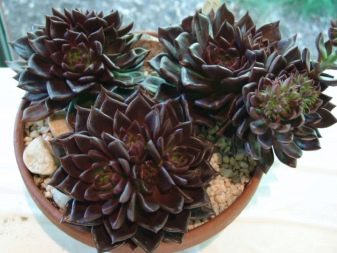
Stone flower "Lau" with bluish leaf plates 6x3 cm and a fairly large wax bloom, it has a rosette of about 20 cm. Large sunny flowers are also dull due to bloom.

Unlike other species, this is a more delicate creature that requires increased attention to light and watering.
"Miranda" - a hybrid variety that originally looked like a lotus flower, had a rich green color and bright burgundy tips. But the new varieties are already almost entirely burgundy, on a green trunk. There are also lilac, yellow, silvery, pink leaves. With such a plant, you can arrange wonderful and completely unusual florariums.


Multi-stem - a strongly branching stone rose, growing up to 1 m. The leaves are small, slightly concave, dark green with a red edging, the rosette is loose, glossy. Bells are small: red outside, yellow inside.
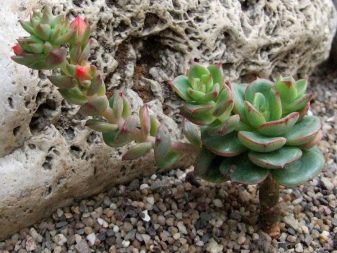

Meat-colored or meat-colored echeveria, has a short stem of about 6 cm, which branches. Basal rosette of medium size (up to 10 cm wide and 15 cm high). Leaves about 7 cm long are not very fleshy in density, but they are very similar to meat in their color.


Nodulose, or nodular echeveria - a flower with a loose rosette, 50 cm high. Ovate leaf blades 8 cm long are bright green, but as if entangled with burgundy cobwebs on the front and back of the leaf. The peduncle appears in early spring with scarlet-brown inflorescences.


Cushion echeveria - a low-growing stone flower with a rosette of about 10 cm. Velvet pubescent leaves are bent at the bottom, have an oval shape with a thorn at the top. A low peduncle appears in early spring, delighting with yellow-red flowers. The plant looks like a white-haired species, but differs in an obovate leaf.

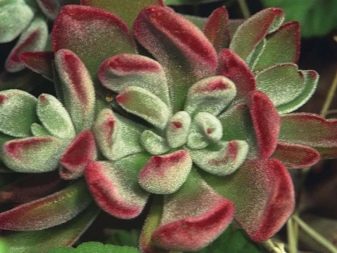
Shavina, or Sho looks like a head of cabbage with wavy edges of blue-gray leaves. For the winter, the plant sheds most of the foliage. At the beginning of summer, it throws out 2-3 peduncles much higher than the rosette with lanceolate leaves. On the stems of the peduncles, several dozen flowers are revealed in turn.
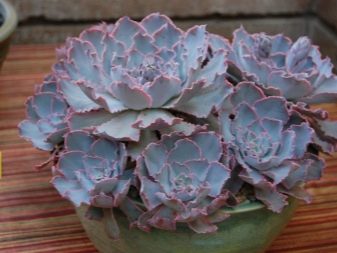

Bristly echeveria similar to chrysanthemum, but with fleshy lanceolate leaves 10x4 cm in size. Due to the white hairs of the edge, green leaf plates appear gray. The rosette is almost spherical, reaches 15 cm in diameter, and the stem is 10 cm. The peduncle is also bristly, blooms in early summer with flowers resembling a fire.


Echeveria Amoena considered a rare species and highly prized by plant lovers. There are varieties with flat shoots and a lot of twigs. Bluish triangular leaves, flowers on a peduncle in a yellowish-red range.


Echeveria whitish refers to the pubescent species. The owners of this flower call her beauty: green, lanceolate leaves with a brown edging are covered with white hairs, which makes the flower look like a newborn animal. The rosette reaches 20 cm.


The flower stalk is 40-50 cm high and has red-brown flowers that appear in spring.
Echeveria Garms - a shrub with small, diamond-shaped, pubescent leaves with red tips. Loose rosette with aerial roots. Flowers - red bells with a yellow top of the petal 2 - 3 cm long.

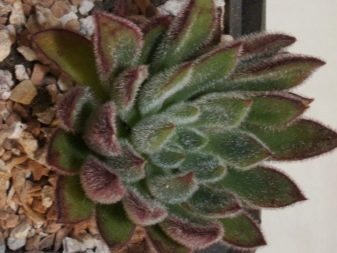
Echeveria Desmeta Is a rosette with bluish leaves, which eventually become ampelous. Around July, lateral flowers of a yellow-orange color appear. The flower is shade-tolerant enough.


The next view is echeveria graceful - an almost stemless plant with fleshy dense leaves and a lotus-shaped rosette. With age, the shoots become creeping and capable of self-rooting. The bluish bloom on the leaves should never be removed. The vertical peduncle pleases with bright pink-red bells with a yellow border.


One of the most popular types of graceful stone roses - Echeveria Derenberg... Gray-green spatulate leaves turn into pink at the edge. Creeping shoots. Five-centimeter peduncles with 3-5 yellow-orange flowers, similar to spikelets, appear from the dense sinuses between the upper leaves in spring.


Echeveria Peakotsky (Peacock) - captivates with its appearance, or rather, it makes it a bright drooping peduncle. The color of the foliage can be uniformly green or with triangular pink tips.


Lingual echeveria named so for the shape of the leaves, similar to the tongue: obovate, the apex is obtuse, the color is light green with a bloom. Low-growing shrub 20-30 cm tall with two stems. Peduncles are fleshy, with drooping stem. Abundant straw-yellow flowers appear in spring, rarely in mid-winter.
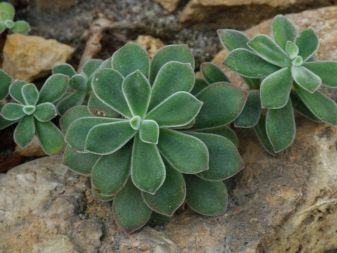

Conditions of detention
Being an unpretentious plant, echeveria requires minimum living conditions.In the autumn-winter period, it is necessary to maintain a temperature of 10-16 degrees indoors for non-flowering species and 18-21 degrees for flowering ones. In spring and summer, the air temperature is allowed up to 30 degrees. The plant loves dry air and strongly dislikes spraying. Almost all species are drawn to the sun, they love direct sunlight.
The more light, the denser and brighter the leaves will be. But it is necessary to accustom a young plant to an abundance of light gradually so that it does not burn out.
Planting and transplanting
When buying a plant in transport soil, many strive to immediately transplant the flower into good soil. But in order to adapt to new living conditions, experienced flower growers advise not to rush to transplant: let the succulent stay in a store pot for a month. The flower must be placed in a shaded place and dried until aerial roots appear.
It is easier to adapt to new conditions for plants grown in nurseries as close as possible to the conditions of the place of sale. They are more expensive, but do not die for no apparent reason. They are also given the opportunity to dry out on the window. After a month, the houseplant is transplanted into a new soil mixture and a pot.

With regard to the soil, it should be noted that in nature, a stone rose grows on stones, where water only flows, but does not stagnate. The same substrate must be prepared during transplantation. Here are some suitable options:
- mix in equal proportions leafy earth, humus, sand and small pebbles;
- Mix purchased soil for succulents with pebbles, expanded clay, broken small bricks in a ratio of 4: 1;
- Mix 3 parts of garden soil with 1 part of small pebbles, 1 part of peat and a little charcoal or activated carbon.

As drainage, you can use zeolites - minerals that can give and take away excess moisture.

Checking the correctness of the prepared mixture consists in squeezing the substrate in a fist: a suitable mixture should crumble after unclenching the hand.
There is hardly any difficulty in choosing a flower pot - it should be 1.5 cm larger than the diameter of the plant, flat, with holes for draining water. Very small plants can be planted in mini cups. For planting several plants of the same or different species and varieties, use wide low dishes. Before transplanting, you need to carefully check the roots of flowers: cut off diseased, damaged ones, and rinse healthy ones for reliability in a weak manganese solution.

The bottom layer that is poured into the pot is drainage (different types of pebbles). The second layer is calcined for disinfection, cooled and moistened substrate, on which the plant is placed, on top - again the substrate to the root collar. In the first week, the flower is not watered.

Young roses are transplanted once a year. Adults - when the flower begins to cross the border of the pot (about once every three years).
A great way to show the beauty of your favorite flowers of the Tolstyankov family is to grow them in an unusual greenhouse - a florarium. Initially, back in the 19th century, plants were planted in floor, wall, tabletop, hanging florariums, which needed to create a special microclimate. Now it is more of an interior decoration, a design move that allows you to create unusually beautiful flower arrangements from succulents. Absolutely any containers are used as a flower pot:
- earthenware jugs and jars, including broken ones;
- aquariums;
- glasses;
- glass tetrahedrons;
- ceramic bowls.



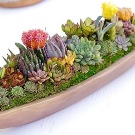


Compositions behind glass look most interesting, especially if you use multi-colored sand, zeolites, moss for drainage. But at the same time, one should not forget about the substrate layer for echeveria - it can be decorated for beauty. Several recesses for plants are carefully made in the ground and specimens are planted with tweezers, given that they will grow. Such compositions are often watered with a pipette, since this must be done at the root.From above, everyone is covered with decorative pebbles and sand, and figures are installed.

Very often, plants from other families and genera are planted in the florarium along with a stone rose: cacti, jerky, Kalanchoe, euphorbia, haworthia, lithops. The main thing is that this mix requires the same care, the amount of moisture and the plants do not interfere with each other. But still, after a year or two, the florarium will have to be expanded - the plants grow.
And one more thing: there are no drainage holes in such containers, which means that you need to water even less often, and no spraying - it is a desert and it should remain a desert in the aquarium.
How to care?
Growing such beautiful and unusual flowers is a pleasure in itself. Of course, I want to take care of them so that they grow up, do not get sick, and please the eye. But the special joy is the flowering of the plant. Not all species bloom at home simply because there is no pollination. But why do not those varieties that should please with color bloom? Perhaps due to improper care. Do not expect the plants to bloom in the first year or two - they are still small.
In other cases, you need to help the rose. To do this, maintain the temperature around the flowers at 15-18 degrees for 1.5-2 months (but without covering). Plants should be exposed to light for 12-13 hours. After that, the first buds should appear. After the appearance of the peduncle, Echeveria is watered more often and fed with fertilizer. Better to buy a special complex for flowering plants. After flowering is complete, there is a dormant time with the usual frequency of watering and dressing.

Top dressing
Since Echeveria is undemanding to soil fertility, it must be fed very carefully. From spring to autumn, mineral fertilizers are applied for cacti and succulents once a month in the form of solutions (in a half dose). In the autumn-winter period, feeding is not carried out. The same is not done even after transplanting the plant into new soil for two months. For echeveria, it is not recommended to use pure organic matter and nitrogenous fertilizers.

Watering
The desert plant does not require frequent watering. You need to wait until the earthen lump under the flower dries out thoroughly, only then it needs to be watered. In winter, even more rare watering will save the plant from drawing out an excess supply of water in the leaf plates, an unwanted tilt of the stem. If the temperature in the house in winter is high enough, then the rose is watered only a little less often than in summer. Before watering, water must be defended for 2-3 days or use an aquarium when changing it (this will be a kind of top dressing).

It is advisable to water on the soil, but do not strive to wash the leaves - the plant does not need this. The water should not stagnate in the pot.
You can determine that the flower still lacks water by the appearance of the leaves - they become lethargic and wrinkled.
Reproduction
Like many other flowers, Echeveria can be propagated at home in all (or almost all) available ways:
- sheet;
- apical cutting;
- basal rosette;
- seeds.
Let's consider each method step by step.
Reproduction by a sheet.
- Depending on the type, the lower healthy leaf is broken off or carefully cut with a knife.
- The leaf must be dried: 2-3 hours - a thin plate, 2-3 weeks - a fleshy specimen.
- A mixture of earth and sand (2: 1) is poured into a flower pot or container, sprinkled with clean sand, perlite or other fine minerals on top to a height of 2 mm.
- The sheet is pressed against the ground with a cut inward slightly at an angle.
- The soil is moistened with a sprayer and covered with a plastic cap. You need to open the hood daily for ventilation, moisten as the soil dries. The temperature in the greenhouse is maintained at 25 degrees.
- After 2-3 weeks, babies should appear, which are deposited when the uterine leaf is completely dry.
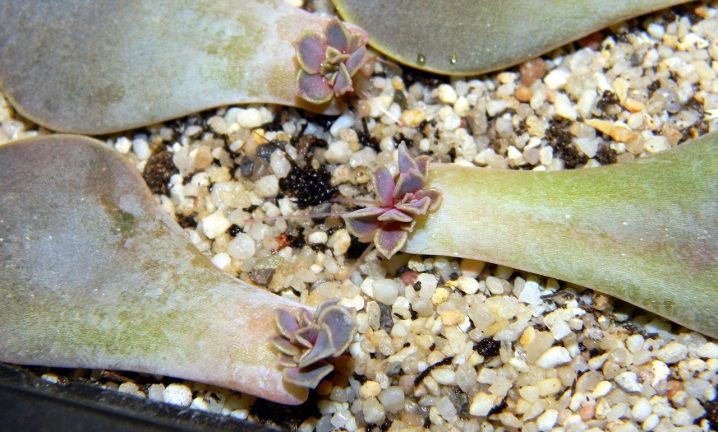
Apical cuttings propagation is used when the lower leaves of the plant have fallen off, there was a bare, ugly stem. Often the plant begins to lean to the side.
- Gently break off the top, remove the lower leaves from it so that there is a stem for burrowing into the soil. The stalk is left to dry for 2-3 hours.
- The substrate is prepared from 2 parts of coarse sand and 1 part of turf. Top covered with clean sand.
- The stalk is buried in the soil, sprayed and created a greenhouse effect, covered with a transparent cap.
- This method also requires regular ventilation and humidification. After about 20 days, the tip should grow.

Propagation by a root rosette - perhaps the most effective way, since in a year it will be a full-fledged echeveria, which will be able to throw out peduncles.
- With a sharp knife, processed in a weak manganese solution, cut off the root (or apical) rosette, remove the lower leaves.
- Leave the outlet to dry in a shaded place for 3-12 hours, treating the cut with charcoal.
- A mixture of 1 part of sod land and 1 part of coarse sand or small pebbles is poured into a temporary flower pot. It is advisable to cover the bottom with drainage stones.
- Slightly press the outlet into the ground and water the ground a little. The plant is rooted at a constant temperature of about 24 degrees and constantly damp ground. In a month, the leaves should grow at the outlet.
- It can be transplanted into a permanent pot with drainage after 2 months, but if the rose grows slowly, then this can be done within a year.

Seed propagation considered the most difficult way, more precisely, the longest. In addition, when buying material, what is stated in the picture does not always lie in the packages.
- Echeveria seeds can be purchased or harvested on their own after the plant has flowered. In February-March, seeds are spread on a peat-sand mixture (1: 1) of a flat container, not sprinkling, but only slightly pressing.
- Crops are sprayed with warm water and covered with glass. In such a greenhouse, you need to maintain a temperature of 21-25 degrees and high humidity. But airing is necessary every day.
- After 14-21 days, shoots should appear, which dive in 2-3 months (with the appearance of 2-3 true leaves).
- Upon reaching 3 cm in diameter, the rosettes are transplanted into permanent pots.

Diseases and pests
Echeveria's problems can arise not only with improper handling of the plant, but also with pest infestation. They can get on the flower from nearby plants or if the plant was already infected at the time of purchase.
Signs of pests.
- Gall nematode. The plant is depressed, withers. The pest multiplies in thickenings that appear on the root system. The plant needs to be quarantined from others. For treatment, diseased roots are removed, the root system is kept in water for half an hour at 40-45 degrees. During this time, you need to either treat the old earth by spilling with Aktara solution (1 g per 5 liters of water) 3-4 times, or prepare fresh soil. If the same pot will be used, it is better to scald it with boiling water. You need to transplant the plant only into prepared soil.
- Root worm. The leaves lose their elasticity, the plant stops growing. Whitish cobwebs appear on the earthen coma - the nests of worms. Several treatment options: completely change the earthen composition in a pot, water with "Aktara" 3-4 times a month, or water with "Fitoverm", "Aktellik", "Aktara" once a month as a preventive measure.
- Mealybug. Thin waxy cobweb, sticky bloom on the plant, oval whitish insects covered with a mealy bloom, the plant withers. In mild cases, you can try to treat the plant with "Karbofos" (6 grams per 1 liter of water) or other insecticides, soap-alcohol solution. If the plant is affected by almost everything, then it is thrown away. Some growers try to separate healthy parts in order to reproduce them. To do this, you need to be sure that the remaining fragment is absolutely healthy.
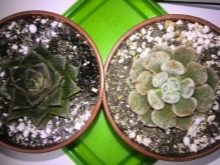
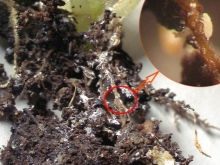

Like all plants, Echeveria can also be affected by diseases.
- Powdery mildew. A white bloom appears on the leaves - mycelium, the leaves turn yellow and gradually atrophy, the plant seems to be eaten away. Diseased leaves, peduncles are removed, the top layer in the pot is replaced, the plant is abundantly treated with fungicides.
- Root rot. The leaves become smaller, begin to turn yellow and fall off, the roots turn black. At the initial stage, decayed roots are cut off, the cuts are dipped into crushed activated carbon, and then dried. The flower is transplanted into a new soil. Do not forget to treat the pot itself with fungicides. A heavily affected plant is thrown away without regret, so as not to infect the rest of the flowers.
- Dry rot. The trunk turned black, the leaves weakened, turned pink and fell off. The plant is planted away in quarantine, they wait for the crown to grow back, cut it off and plant it. The rest of the plant is thrown away.



Often the poor health of Echeveria is associated with underfilling or overflowing the plant, or with improper lighting. Here are some visual problems you might notice when doing this.
- Leaves become smaller, grow more slowly. The reason may be a small pot, insufficient watering, a lack of nutrients. To solve the problem, the flower is transplanted into a larger pot, the irrigation regime is changed and regular feeding is carried out.
- The leaves have lost their turgor - they do not have enough water. The plant needs to be watered, rearranged to a cool place.
- The rose stretched out, the leaves turned pale - they lack lighting. The flower needs to be rearranged closer to the light.
- Blackening of plant parts is associated with unsuitable low temperatures and too frequent watering. Rotten leaves are cut off, the flower is watered less often. Find a warmer place for the plant.
- Yellowing of the leaves may be due to stagnant water in the pot. In such cases, it is sometimes easier to replace the land if it is already silted up.
- In winter, the lower leaves often dry out, the plant sheds them, after which new children appear.

For how to care for, propagate and grow Echeveria, see the video below.








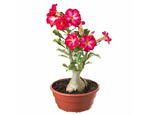




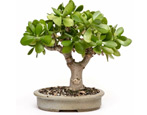




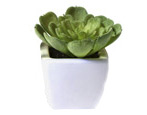








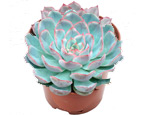




















Thanks for the advice.
The comment was sent successfully.